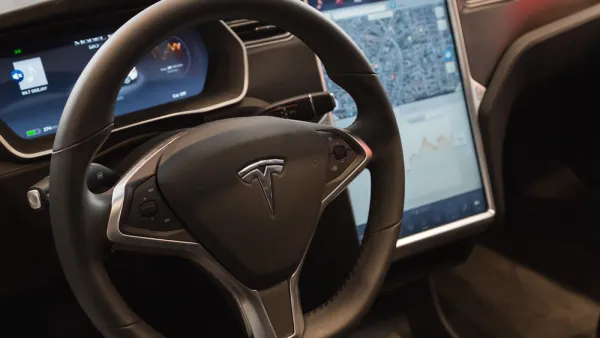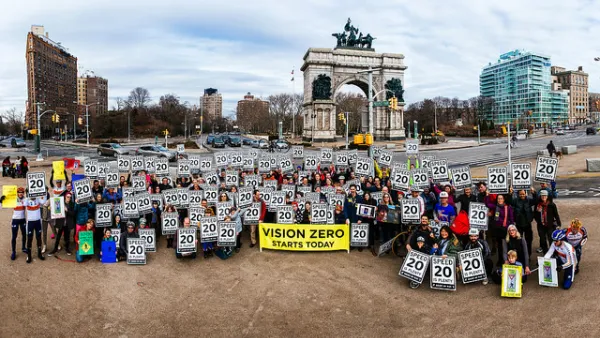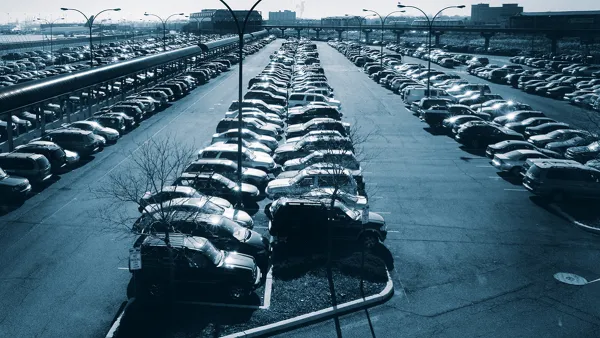With cars accelerating more quickly, drivers have less time to react and can pose more danger to pedestrians.

Car companies boast about the rapid acceleration of their vehicles. Tesla and electric rivals Rivian, Porsche, and Audi claim their vehicles can hit 60 miles per hour in two seconds. Writing in Bloomberg CityLab, Dan Albert asks, what does this mean for road safety?
Albert provides an illuminating history of the drive for acceleration and power in the car industry. While the muscle car is the quintessential example of that impulse, “EVs possess a big technical advantage over their gas-powered kin when it comes to acceleration.” As Albert explains, “Electric motors can generate all of their power from zero RPM, giving EVs their eye-popping acceleration figures, particularly at the lower end of the speedometer.”
The article goes on to explain why this poses a danger to pedestrians, particularly in urban areas. Albert acknowledges that “The degree to which extreme acceleration could be contributing to the surge in traffic deaths the US has been experiencing in recent years isn’t known; a slew of factors, including the growing popularity of oversized SUVs and pickup trucks, have combined to make American roadways disproportionately lethal, and the dangers that larger vehicles pose is dramatically magnified by speed.” But faster acceleration gives drivers a smaller margin of error, making it harder for a driver to react before a crash. “Safety experts have only begun to consider what this new generation of high-powered vehicles means for the passenger alighting from the bus or the pedestrian scurrying across the road.” While the auto industry is likely to resist regulation, technology such as geofencing that reduces vehicle speeds in certain zones can limit the negative impact of faster acceleration.
FULL STORY: Extreme Acceleration Is the New Traffic Safety Frontier

National Parks Layoffs Will Cause Communities to Lose Billions
Thousands of essential park workers were laid off this week, just before the busy spring break season.

Retro-silient?: America’s First “Eco-burb,” The Woodlands Turns 50
A master-planned community north of Houston offers lessons on green infrastructure and resilient design, but falls short of its founder’s lofty affordability and walkability goals.

Delivering for America Plan Will Downgrade Mail Service in at Least 49.5 Percent of Zip Codes
Republican and Democrat lawmakers criticize the plan for its disproportionate negative impact on rural communities.

Test News Post 1
This is a summary

Test News Headline 46
Test for the image on the front page.

Balancing Bombs and Butterflies: How the National Guard Protects a Rare Species
The National Guard at Fort Indiantown Gap uses GIS technology and land management strategies to balance military training with conservation efforts, ensuring the survival of the rare eastern regal fritillary butterfly.
Urban Design for Planners 1: Software Tools
This six-course series explores essential urban design concepts using open source software and equips planners with the tools they need to participate fully in the urban design process.
Planning for Universal Design
Learn the tools for implementing Universal Design in planning regulations.
EMC Planning Group, Inc.
Planetizen
Planetizen
Mpact (formerly Rail~Volution)
Great Falls Development Authority, Inc.
HUDs Office of Policy Development and Research
NYU Wagner Graduate School of Public Service





























